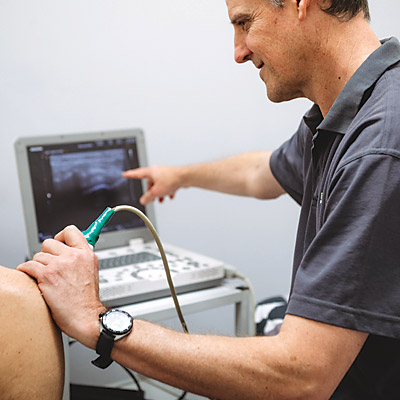Peter Esselbach, one of our Physiotherapists is also a qualified sonographer. He has 30 years experience working in medical imaging and 18 years working as a musculoskeletal Physiotherapist.
Peter utilises Real Time Ultrasound Technology to look into the tissues of your body to actually see what is happening in your muscles, tendons, ligaments and joints. Using diagnostic ultrasound can assist in identifying your problem and provide a clearer pathway to overcoming your pain or discomfort. It can also be used to look for abnormal muscle patterns and also as an educational tool.
How does the Ultrasound help?
Ultrasound provides an ideal way of visualising tissue which may be at fault and contribute to pain. Soft tissues such as muscles, ligaments and tendons, can be assessed for signs of tendinitis, bursitis, tears and bruises. If the muscles are misfiring, ultrasound can be used as a biofeedback tool to encourage lazy muscles to fire up or overactive muscles to calm down. This can assist in achieving more efficient muscle firing patterns.
RUSI assessments can be very useful for people experiencing:
- Shoulder pain
- Hip or thigh pain
- Back pain
- Elbow pain – tennis or golfer’s elbow
- Achilles or calf pain
- Knee pain
- Heel pain or pain in the sole of the foot
- Muscle strains (e.g. hamstring, quadriceps, calf)
- Neck pain and headaches – especially those due to postural issues
- Pre or post spinal surgery
- Pelvic floor dysfunction (e.g. incontinence or post prostate surgery)
- Poor core strength – or wanting to improve their “core” strength
What is involved in having a Rehabilitative Ultrasound Scan?
Duration of the scan – the scan takes place in normal 30-minute consultation
What’s included?
- Assessment of problem
- Retraining of muscle patterns if needed
- Advice and instructions on appropriate rehabilitative exercises
- A printed report on the scan can be provided to your physiotherapist (if seeing another therapist) or doctor



